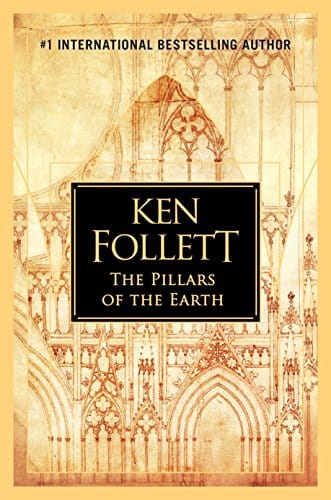Exploring "The Pillars of the Earth": Ken Follett’s Monumental Historical Epic
Explore Ken Follett’s The Pillars of the Earth—plot overview, themes, characters and reasons this historical epic continues to captivate modern readers.

Introduction to a Modern Classic
Ken Follett’s The Pillars of the Earth has captivated millions of readers since its release in 1989. Spanning more than five decades of the twelfth century, this sweeping work of historical fiction chronicles the building of a grand Gothic cathedral in the fictional English town of Kingsbridge. The story’s intricate tapestry of political intrigue, human ambition, romance, and faith makes it far more than a simple architectural saga; it is an immersive portrait of medieval life that still resonates strongly with contemporary audiences.
Plot Overview Without Spoilers
The novel opens in the year 1123 with the mysterious hanging of an innocent man—an event that echoes throughout the narrative. We soon meet Tom Builder, a mason whose dream is to construct a cathedral that will stand for centuries. When Tom’s fortunes intersect with those of Prior Philip, an earnest monk determined to lift his impoverished priory out of obscurity, a vision for Kingsbridge Cathedral is born. Standing in their way is the ruthless nobleman William Hamleigh, whose thirst for power threatens everything Tom and Philip hope to achieve. The plot weaves together the lives of aristocrats, clergy, and peasantry alike, capturing the brutal realities and fleeting triumphs of the High Middle Ages.
A Story Told Through Multiple Perspectives
Follett employs a shifting third-person perspective that immerses readers in the hopes, fears, and motivations of a large ensemble cast. Aliena, a disgraced earl’s daughter turned resilient wool merchant, illustrates the limited but evolving roles available to women. Jack, an intrepid stonemason with a mysterious past, embodies the spirit of innovation that propels Gothic architecture forward. This multi-voiced narration enriches the emotional stakes and enables the reader to witness medieval society from every angle.
Historical Context and Accuracy
One reason The Pillars of the Earth enjoys enduring appeal is Follett’s rigorous attention to historical detail. The author researched monastic life, feudal politics, and Romanesque engineering to ensure authenticity. Real events such as The Anarchy—a civil war for the English crown between King Stephen and Empress Maud—form the volatile backdrop of the novel. Although Kingsbridge itself is fictional, the techniques described, from quarrying limestone to designing flying buttresses, mirror genuine innovations that revolutionized twelfth-century cathedral building.
The Gothic Cathedral as Central Character
The cathedral in Kingsbridge is more than a setting; it acts as a silent protagonist. Every stone laid represents sacrifice, faith, and ambition. As the walls rise, so too do the fortunes and failures of the characters. The cathedral’s evolving architecture—beginning in a massive Romanesque style and shifting toward slender Gothic arches—symbolizes the broader cultural shift from darkness to enlightenment during the medieval period.
Key Themes and Motifs
Ambition and Power: From the church hierarchy to feudal lords, the novel illustrates how far individuals will go to gain or maintain influence. Follett portrays power as both constructive and destructive, capable of erecting cathedrals or razing villages.
Faith and Doubt: Characters grapple with personal belief systems in a world where religion is omnipresent yet often politicized. Prior Philip’s unwavering devotion contrasts sharply with the corruption he battles within the church.
Social Mobility: Through Aliena’s entrepreneurial rise and Jack’s journey from forest dweller to master builder, Follett suggests that talent and perseverance can transcend rigid medieval class structures, albeit at great cost.
Human Endurance: Famine, war, and betrayal test every protagonist. Their resilience underscores the timeless human capacity to dream of something greater, even amid chaos.
Major Characters at a Glance
Tom Builder: A master mason whose lofty aspiration to construct the world’s tallest cathedral drives the plot forward.
Prior Philip: A devout monk whose administrative acumen and moral compass guide Kingsbridge through turbulent times.
Aliena: A noblewoman turned merchant, Aliena illustrates self-determination in an era largely hostile to female agency.
Jack Jackson: Gifted artisan and curious wanderer, Jack personifies innovation and artistic passion.
William Hamleigh: The story’s principal antagonist, William embodies unchecked cruelty and feudal entitlement.
Why the Novel Still Resonates Today
Although set nearly nine centuries ago, the novel explores universal questions about leadership, community, and the moral cost of progress. Modern readers recognize parallels in contemporary debates over large public works, wealth inequality, and the balance between faith and secular authority. Follett’s cinematic pacing and relatable characters make dense historical material accessible, proving that well-researched fiction can be both educational and riveting.
Impact on Popular Culture
The Pillars of the Earth spawned a successful television miniseries, a board game, and even a video game adaptation, broadening its reach beyond traditional book lovers. Many travelers cite the novel as their inspiration for touring European cathedrals, demonstrating literature’s power to spark real-world curiosity and tourism.
Tips for First-Time Readers
1. Embrace the Length: At nearly 1,000 pages, the book may seem daunting, but every subplot ultimately converges in a satisfying payoff.
2. Use Supplemental Resources: Maps of medieval England and glossaries of architectural terms can enrich understanding.
3. Pace Yourself: The novel is divided into prologues and six parts, natural breakpoints that make the story manageable.
4. Consider the Audiobook: John Lee’s award-winning narration brings additional depth to Follett’s vivid prose.
Recommended Follow-Ups
If The Pillars of the Earth leaves you craving more, explore its sequels World Without End and A Column of Fire, which revisit Kingsbridge across subsequent centuries. For non-fiction context, David Macaulay’s Cathedral: The Story of Its Construction provides an illustrated look at Gothic engineering.
Final Thoughts
Ken Follett’s magnum opus remains a landmark of historical fiction, merging meticulous scholarship with page-turning drama. Whether you are a history buff, an architecture enthusiast, or simply a lover of compelling storytelling, The Pillars of the Earth offers an unforgettable journey into the medieval world—one that reminds us of the enduring human desire to build, to believe, and to leave a legacy carved in stone.



